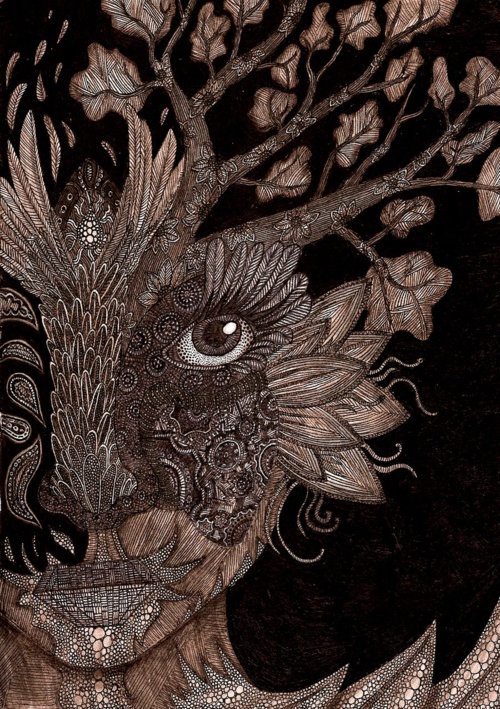
Your weekend partying with friends is over. The workshop, where you’ve connected deeply to the work and to other people who care about the same things you do, has ended. Your family, who you love dearly, and miss, because you rarely get to visit with, has left. Your lover, who because of other commitments, has to go now. The project, the one you’ve been profoundly connected to for the last few months or years, is now complete. The TV series, which brought you into strong feelings, has run out of episodes. You might even be looking forward to the break, to what you’ll be free to do next, and yet, when the party, the meaningfulness, the security, the bliss, the security, the endorphins have, at least for now, paused, you might be disappointed to find yourself feeling a little too alone.
You and everyone you know have unique thresholds for connection and separation. You might have consistently been left before you were ready as a baby and child, so it’s scary when someone or something gestures to leave. You might have exhausted yourself by being scared as a baby and child, so instead, learned how to anticipate unwanted separation, and disconnected first, before the dreaded anxiety. Or you might have been ovwhelmed by a parent’s need for connection when you were a baby and child, and would rather roam, free of expectations from the other. It’s all pretty complex, and sometimes a blend of circumstances are our history. These histories are important, worth deconstructing, giving empathy to, and grieving. Yet, there’s whole other reasons for why we feel alone.
We are raised in a humano-centric world, one in which human relationships are the main source of happiness and discontent. What if human relationships were only one aspect of the myriads we are designed to have? What if the sources of happiness and discontent, and the deeper longing for something more, are rooted in the fact that these other relationships are largely unnamed and missing?
Most people I know, even though they have enough food, a decent, warm, and dry house, a partner or lover, children whom they love, and friendships, live with a gnawing longing for something deep. Largely ineffable, it’s for more of something, less of something, something to do with meaning, depth, rest, and connection. I find the whole thing fascinating, as it seems to also affect health. People who report on this longing also have more pain, fewer pleasures, more stress, and a lessened experience of love, even if surrounded by kind humans, peaceful communities, and great restaurants.
I’m no stranger to this mysterious ailment. The same creature takes up space, pulls at my throat, asking to be made real, yet all attempts at breathing life into it come out garbled; it’s not a request I can make of my husband or friends…who is it meant for? The thing is almost jagged at times, a heartache, a strange feeling behind my eyes, even in my womb. Who is attempting to be spoken?
Because of said longings, I’ve had an open invitation since December 2017 for people to join me in seeing about our relationship to the myriads: land, trees, animals, our ancestors, and even the earliest form of humans, our embryo.
This past gathering, we took to the forest.
After preparing our bodies to become sensitive enough to receive subtle information from the world around us, we took a three-hundred-year-old scientific process for studying plants and humbly applied it for several hours to a single tree. We wondered if by following the steps, which included seeing ourselves as students of a being that can communicate, that we might pick up information the tree had to share.
With the support of this process, the group leaned in, staring deeply at the tree’s structures, all the while holding questions about it’s nature. We drew sketches, wrote phrases, took the feeling of the tree deep into our bodies to understand it from inside ourselves. Some wondered how a tree could possibly hold their attention. Others worried nothing would happen, or that they didn’t have what it took to sense that subtly. I was open to the exercize not working for all, but even I was surprised at what came through. Each participant stood riveted the entire time and emerged that day with their unique understanding of the tree in its ecosystem. Practitioners also discovered that each of their unique intuitive capacities was used differently by the tree. One could smell what another could see. One could feel what another simply just knew. Some details are in botany texts. Much was brand new. We did what I believe ancient cultures have known for quite a while, that we humans, with our unique capacities for speech, art-making, and sensory-drenched reflection, are here to know this place like no other consciousness-imbued being can. We practiced seeing the soul of things–especially the ones unlike us–trees, stones, rivers, oceans, birds, rains, and the like.
After we sat and talked about it. What did it do to us to meet up with the sentience in a non-human being? What does it mean for us now? Each person recognized the strange creature in their throat or heart had been a waiting tendril, the un-required side of a conversation meant to happen between them and the unseen world. We agreed that with the depth of connection, satisfaction, and rest came responsibility. If the world is alive, not just with biological processes, but with volition, sentience, and love, does it change what we then can do to it and ourselves? When we rush past the forest, the river, the rising sun, what is missed? Is the tendril of longing only ours? Or do the wordless teachers long and wait for us too?
We could not conclude our exploration, but we could claim an antidote to feeling too alone–walking out to meet the soul of things in a world waiting and willing to be known.

